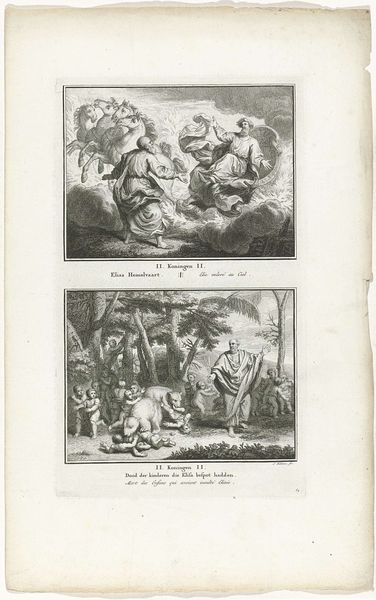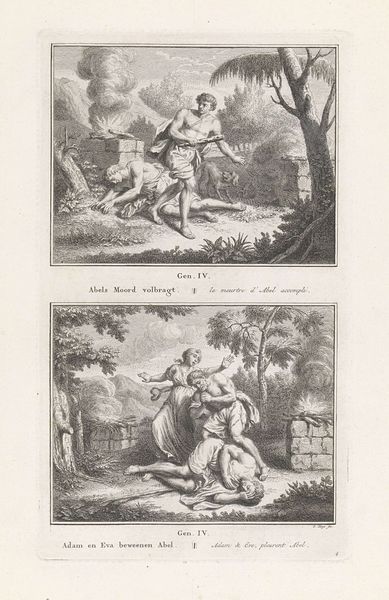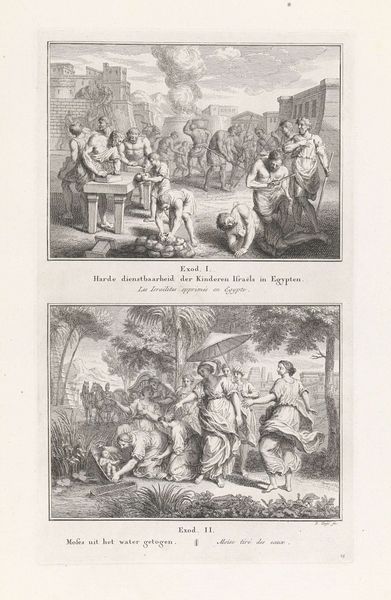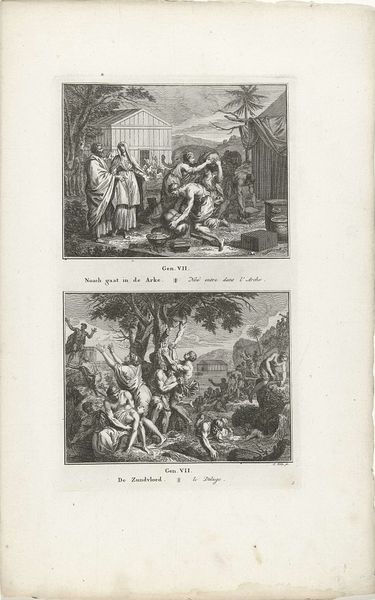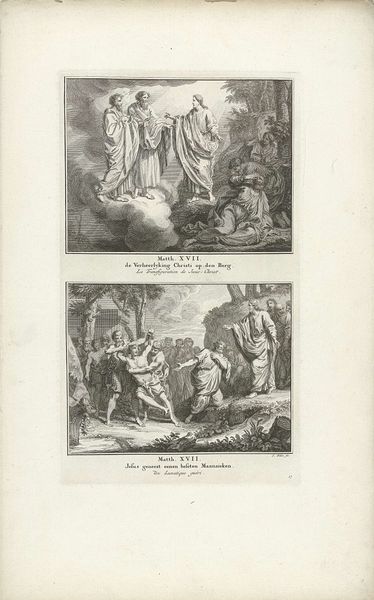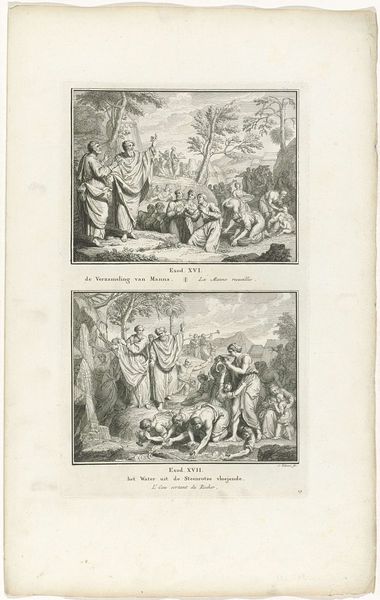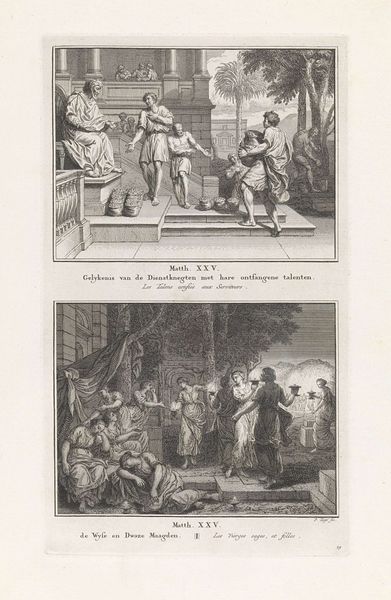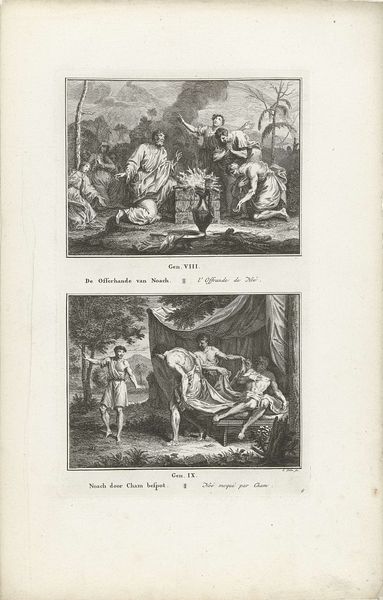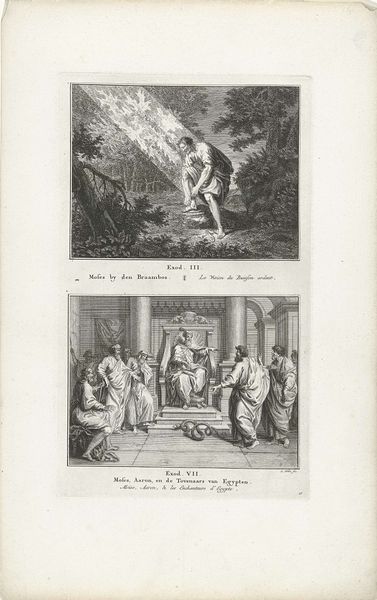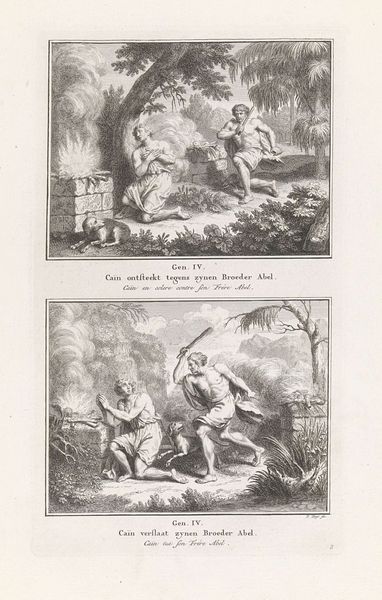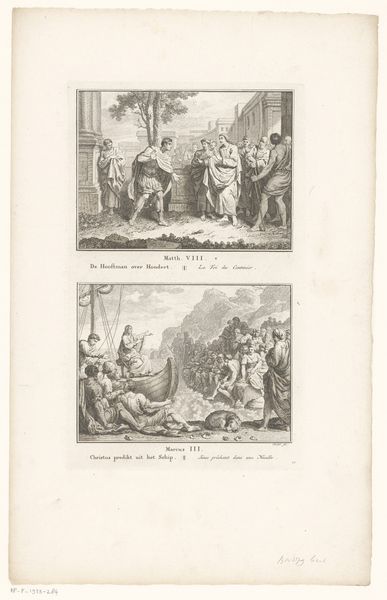
Elia gewekt door een engel en een officier wordt samen met vijftig soldaten door het vuur verteerd 1791
0:00
0:00
jacobfolkema
Rijksmuseum
Dimensions: height 332 mm, width 198 mm
Copyright: Rijks Museum: Open Domain
Curator: What a striking print! This engraving from 1791 by Jacob Folkema, held here at the Rijksmuseum, is titled "Elia gewekt door een engel en een officier wordt samen met vijftig soldaten door het vuur verteerd," depicting scenes from the story of Elijah. Editor: It's certainly dramatic! The stark contrast of light and shadow gives it an almost operatic feel. There's an immediate sense of divine intervention, juxtaposed against the chaos unfolding below. It calls to mind familiar dichotomies, not only of earthly and heavenly powers, but innocence and malevolence. Curator: Absolutely. Folkema masterfully uses Baroque visual tropes to explore the narrative art. The top scene illustrates the angel waking Elijah, while below we see the fiery destruction of the officer and his soldiers. The image as a whole conveys both care and vengeance, depending on who has favor in heaven. Editor: And those soldiers! The rendering of the officer and his retinue, so minutely detailed, adds a layer of the political into the image. You've got a story of faith but you also see how power resists moral influence and, ultimately, succumbs. Is the fire a symbol of divine retribution, or is it commentary about who gets to tell history? Curator: Well, consider the deeper resonance of fire throughout history. It's simultaneously purifying and destructive, evoking transformation across cultures. It could be a metaphor for religious and political upheavals of the time, suggesting how old structures can be burned away. It serves to reinforce the power of belief—of devotion—versus mere militarism. Editor: It speaks, then, to a continuity of belief in images themselves, whether religious, cultural, or political. As a visual symbol, fire certainly connects to many periods. What makes this piece notable is that tension. There's the intimacy of the angel juxtaposed against that almost theatrical scene of conflagration, so it is also the private contrasted against the very public. Curator: Exactly. It encapsulates a moment of private solace followed by an explosive display of public power. Editor: Food for thought, even centuries later. This print is much more complex and less literal than I initially believed. Curator: Agreed. Hopefully, it prompts modern eyes to consider that art and religious symbols endure because they explore a multiplicity of human perspectives.
Comments
No comments
Be the first to comment and join the conversation on the ultimate creative platform.
